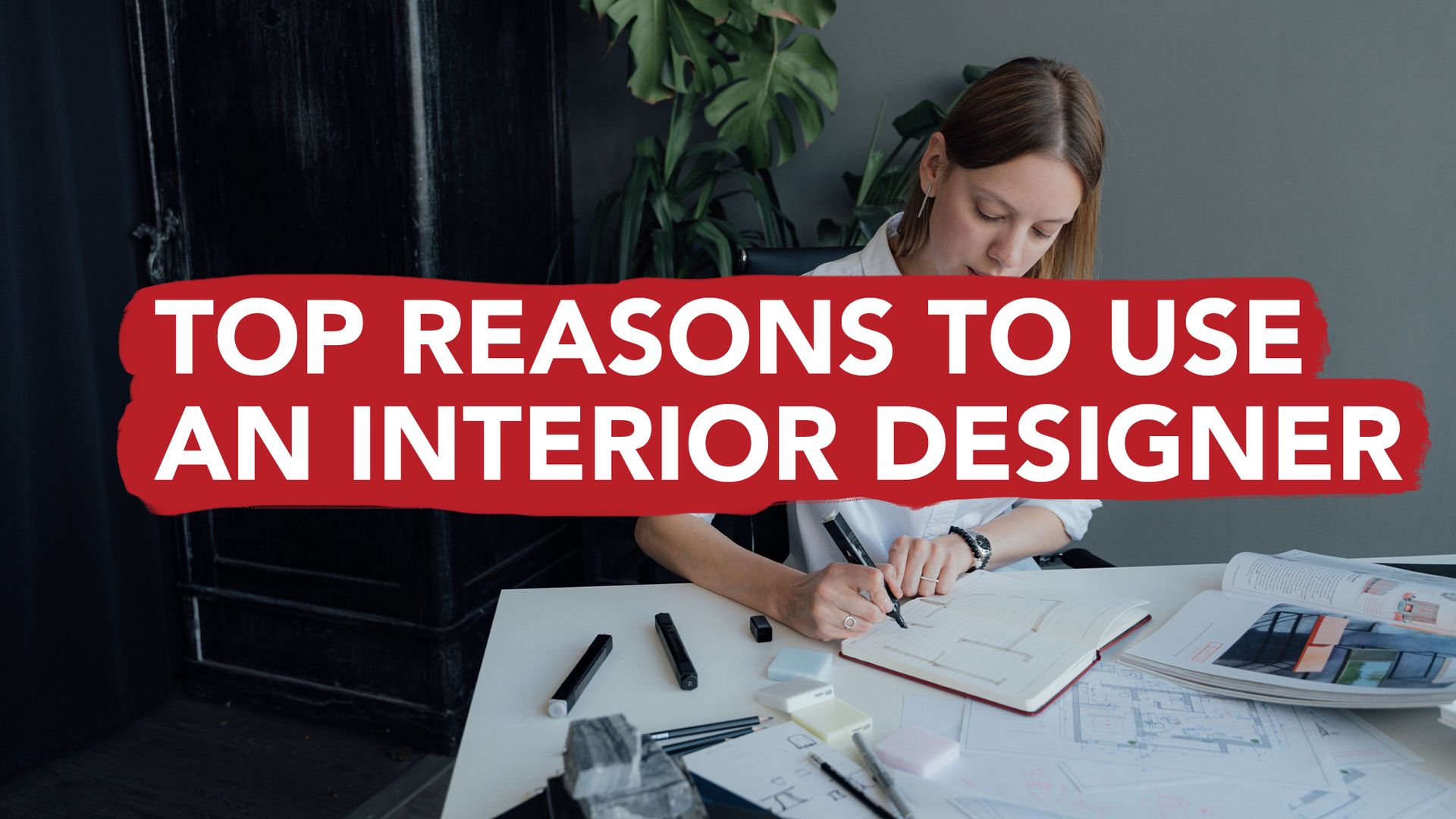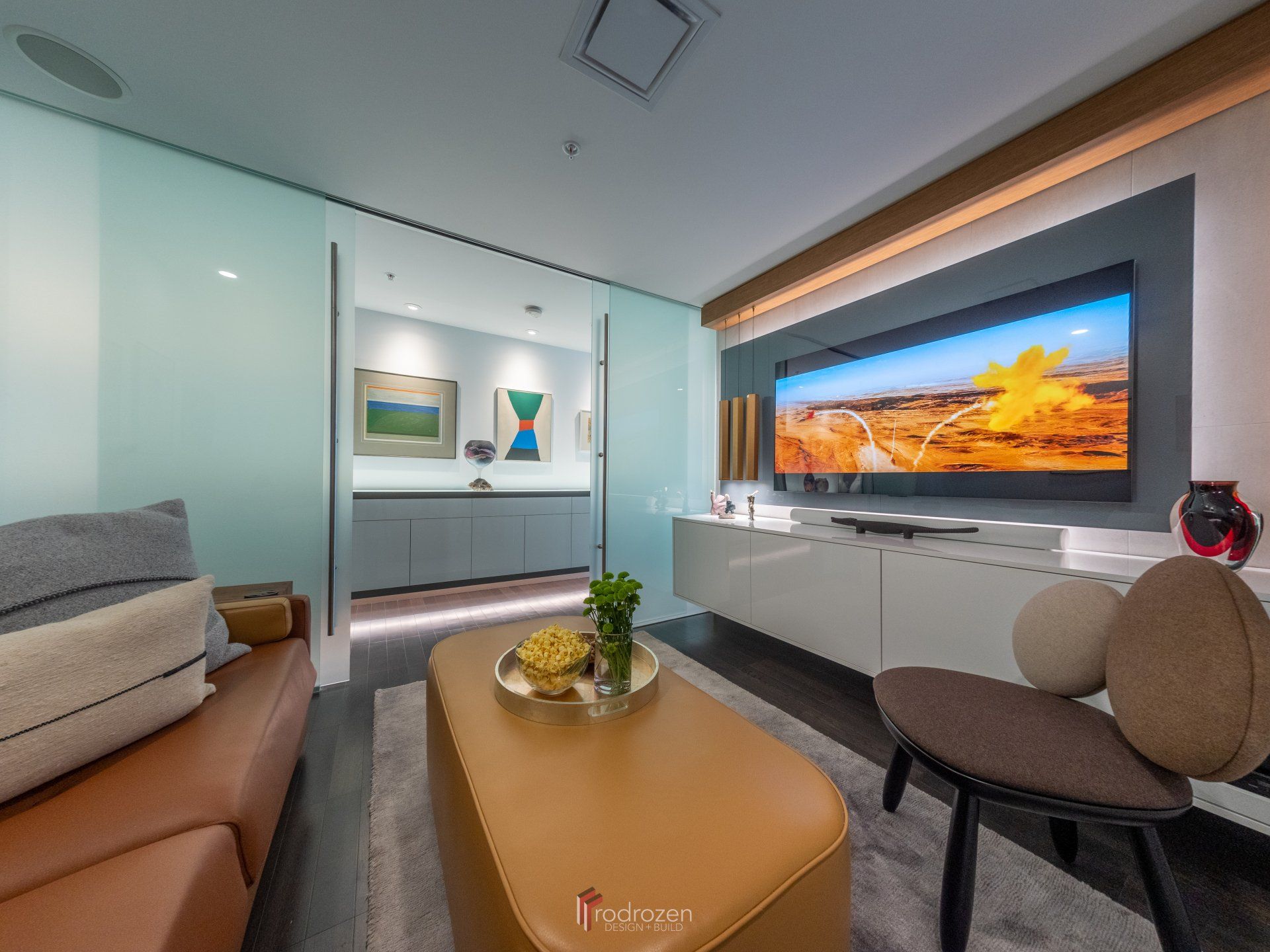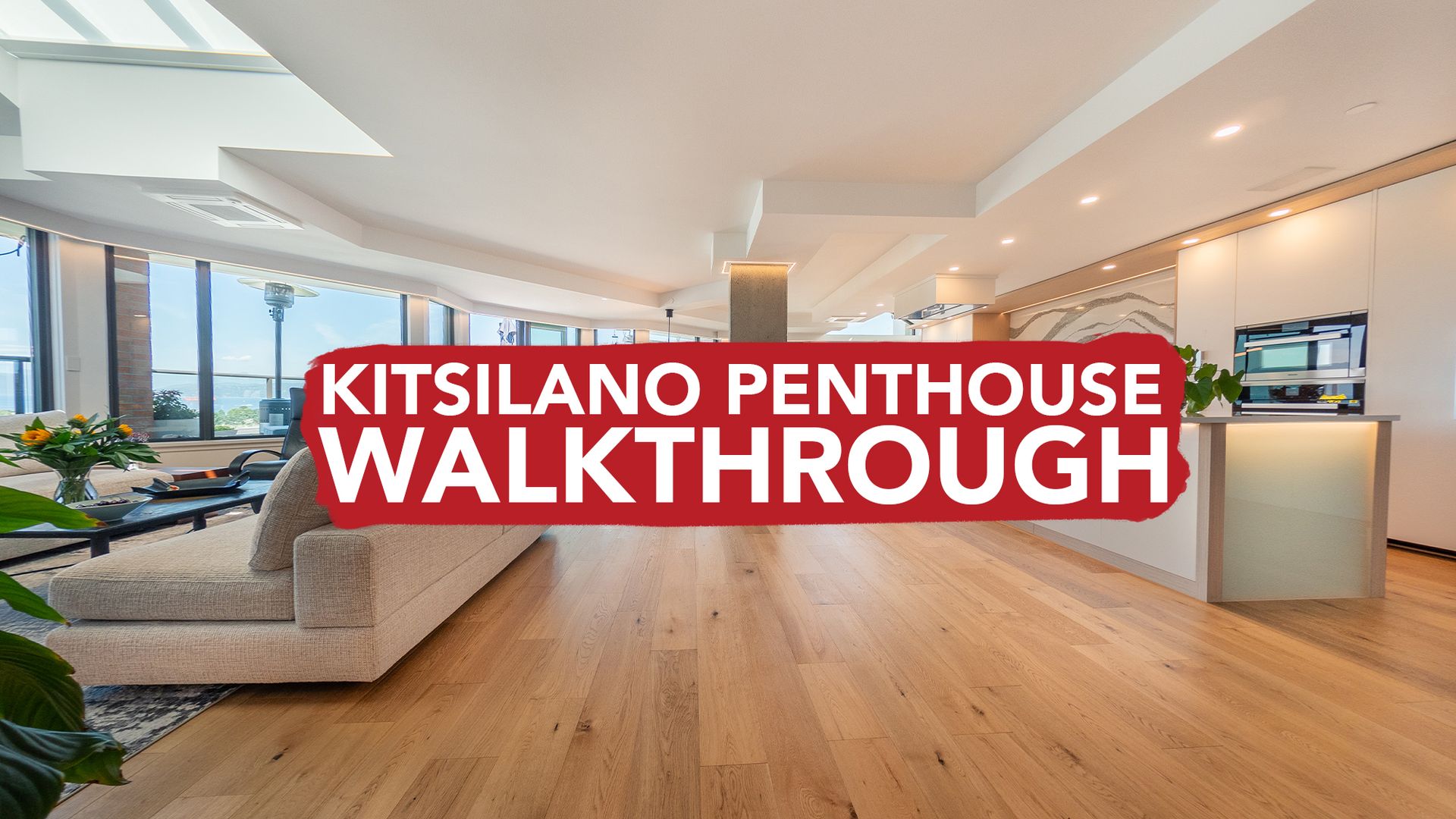TVs AND SOUND IN INTERIOR DESIGN
It's the end of a long day. You sit down, ready to binge your favourite TV series. You turn on your TV and realize that something is off. Several visible cables are coming out from your TV, and it's off-putting.
When designing your TV and sound system in your home, there are several things you can do to ensure that your TV doesn't create an eye sore but, at the same time, gives you the thrill of the latest movie release. Let's dive into some tips and tricks to help you create a home theatre-like experience that is clean and designed for your home.
TV & SOUND TECHNOLOGY
Let's address the technology elephant in the room. Modern TV and sound technology change more often than a referee makes a wrong call on the ice. Who remembers 3D TVs, let alone curved TVs? But if you need some guidance, Best Buy have a good series of articles on the latest technology, and how to interpret it.
In summary, there are three main types of display technology: OLED, QLED and mini LED. Most people couldn't tell the difference even if they had all three types of TVs sitting in front of them. We are fans of OLED technology for its color reproduction, but this comes at a price.
You will ultimately buy based on price but remember to consider supported apps, the user interface, and remote control ease of use.
When it comes to sound systems, you can choose to use the built-in speakers from your TV, a sound bar system, or a more traditional home theatre amplifier and speakers. We recommend getting a dedicated sound system, sound bar, or traditional speakers rather than the tinny and underpowered TV speakers.
For help and advice on which ones to purchase, we recommend this article on sound bars and this article for traditional home theatre sound systems.
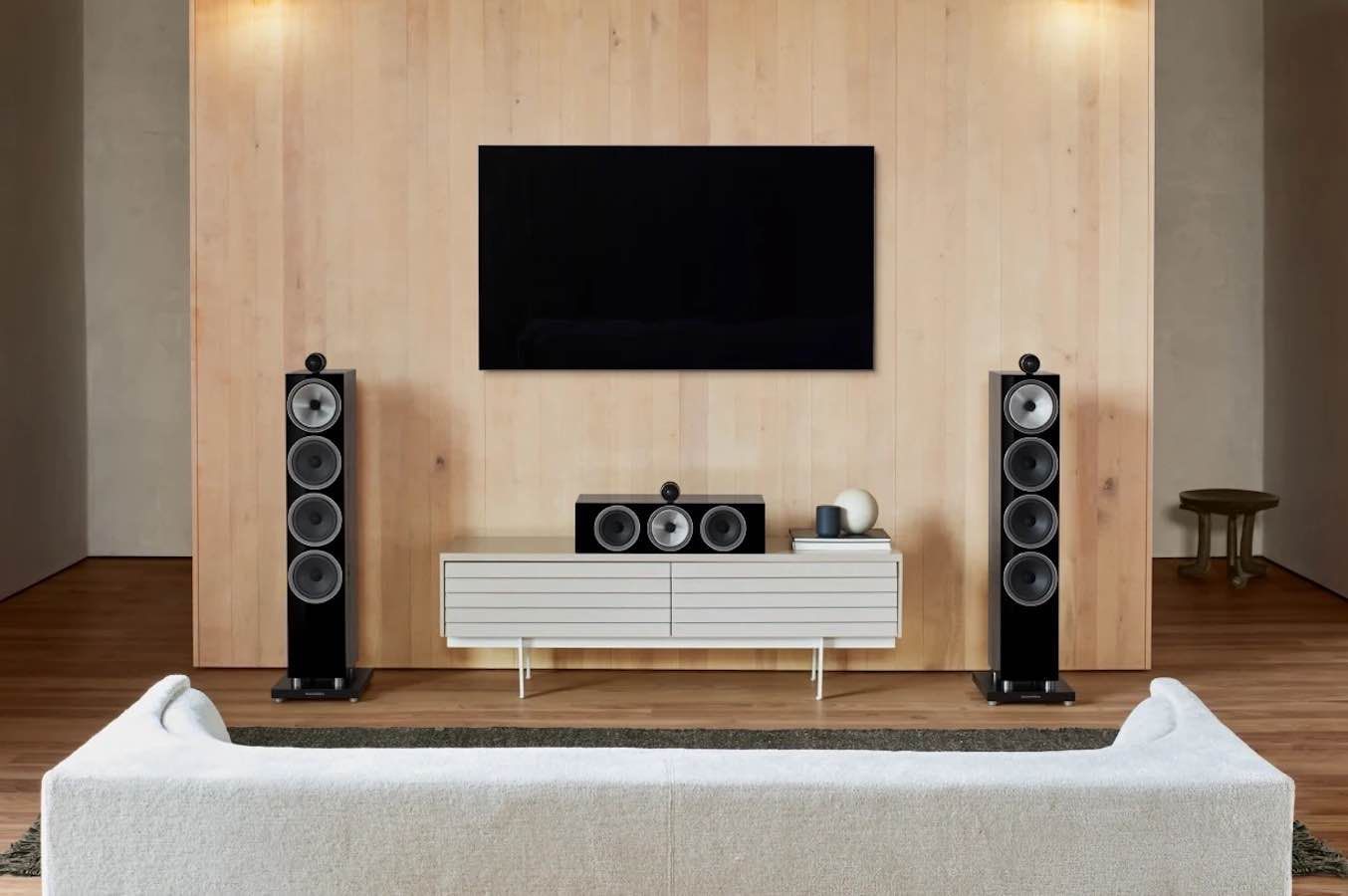
A traditional home theatre audio system. Do you want to see or hear your speakers?
A sound bar system is a great place to start, and adding on a subwoofer and surround sound speakers will create a sound experience worth the investment. If you want to go full send, a traditional home theatre audio system with an amplifier and multiple speakers is the best for power and quality. A traditional system comes with a more significant price tag and the visual aesthetics of more prominent speakers in your living area.
We love the middle ground of a sound bar system with a subwoofer and small 'bookshelf' surround sound speakers. These systems take up much less space, and their technology has advanced significantly in recent years, making them very capable for most homes and spaces.
LAYOUT & TV SIZE
Getting your TV in the right place is vital to your living space. There are two trains of thought depending on how you use your living space. One is to have the TV as the primary focal point, with the sofa and seating centred around it so that you are facing it directly.
The other way is to set up your living room where your TV is not the room's focus. The seating and chairs facing each other around a coffee table. Install your TV off to the side on a swivel bracket so that it can swing out from a wall and into place for viewing but then be pushed back so that it does not dominate the space.
As a general guide for the size of TV you choose, measure the distance between the TV's location and where you will sit to watch it and divide it in half. For example, if you sit 100" from your TV, a TV in the 50" size range would be suitable.
You want to avoid placing your TV in front of windows unless you have drapes or blinds, ideally with blackout lining material, especially if you watch TV during the day.
DESIGN THAT TV
From an interior design perspective, incorporating a TV into your home is an opportunity to create a focal point and enhance the ambiance of your space.
Again, there are two ways to create your TV focal point. One is to take a minimalist approach, and the other is more traditional.
The minimalist approach to designing your TV is to install it on a wall bracket with a sound bar immediately under it. The cable TV box is installed directly behind the TV in either a wall panel or niche. No cables are showing, and all the devices are connected wirelessly to your home Wi-Fi or via internal routing behind the wall.
You can see this example in our design and build on West Hastings Street in Vancouver.
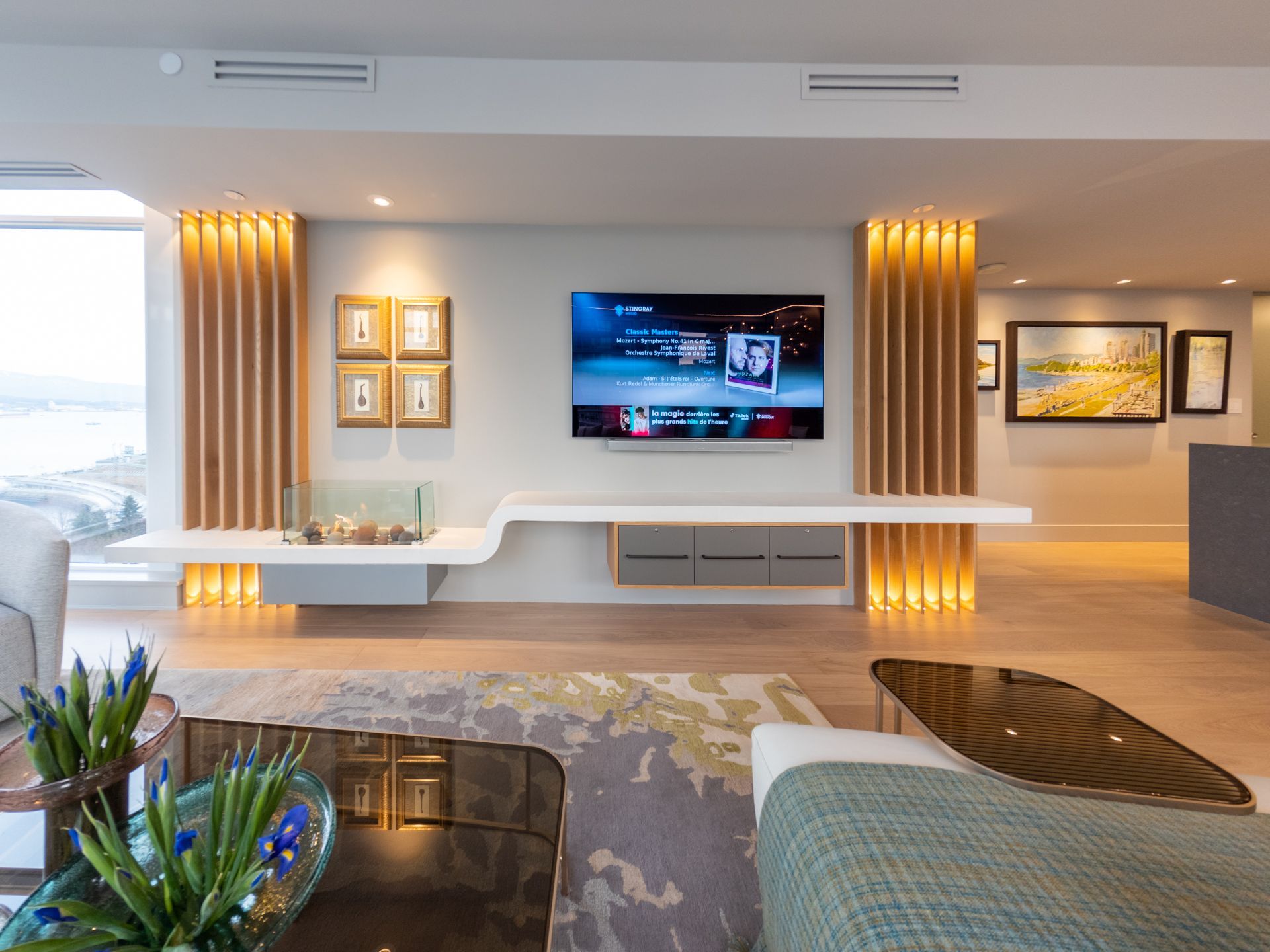
Minimalist approach to TV and sound in interior design
Our little hot tip is that most modern cable TV boxes are a fraction of their former size. Chat with your TV provider and see if they can swap out your old TV box for a smaller modern one that can easily sit behind your TV and out of sight.
The other approach is a more traditional installation, where your TV sits on top or as part of the millwork or cabinet. With your sound system installed as part of the millwork, it compliments the millwork in its finishing. Here, the amplifier and other associated technology sit in the millwork-designed storage out of sight. Cables run through the wall, or the TV sits on the cabinet.
You can see this example with our
West Cordova Street interior design.
A more traditional approach with millwork or a cabinet to hide sound equipment
CAMOUFLAGE YOUR TV
You can do several tricks to camouflage a TV or sound system in your home. You can discretely use a black or darker colour palette to help disguise your TV by blending it on your wall. Blending your TV on a dark or black wall can also help create a more immersive viewing experience like a movie theatre.
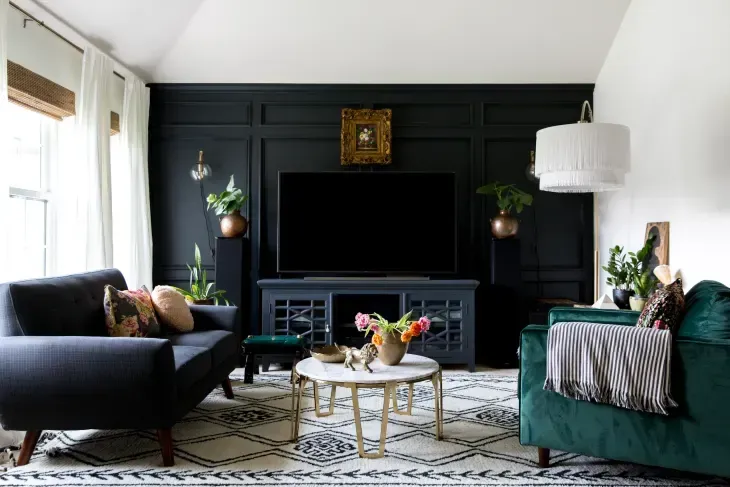
Design your TV with a dark wall to blend it into your home
Incorporate your TV and sound system into a gallery wall, bookcase, or shelving unit surrounded by art or books. Many brands offer 'art style' TVs with skinny bezels, and you can show art on your TV to further the look.
Another option is to hide your TV behind a sliding panel, sliding doors, or window curtains that extend to cover a wall.
If you are installing a TV on the wall, we recommend that you choose a TV with a relatively thin profile and utilize a low-profile bracket so that the TV sits as close as possible to the wall.

'Art style' TV's with their thin bezels and showcase art
Regarding hiding speakers, we recommend choosing speaker colours that closest match your chosen colour palette. Most speakers come in white, black, or wood finishes. You also want to hide all the cables for speakers in the walls so that these do not show.
Subwoofer speakers can be placed anywhere as their sound is far less directional. They can be hidden away in a corner under a seat or shelf.
CONCLUSION
As you can see, there are many ways to make your TV and sound system look good in your living room. You don't have to sacrifice style for entertainment or vice versa. You can create a living room that is both functional and beautiful, with a TV and sound system that enhances your viewing and listening experience.
Lucky for you, we can help you choose TVs for your style and needs and design them for your home.
Have a chat with us today, and let's see what we can do for you.
